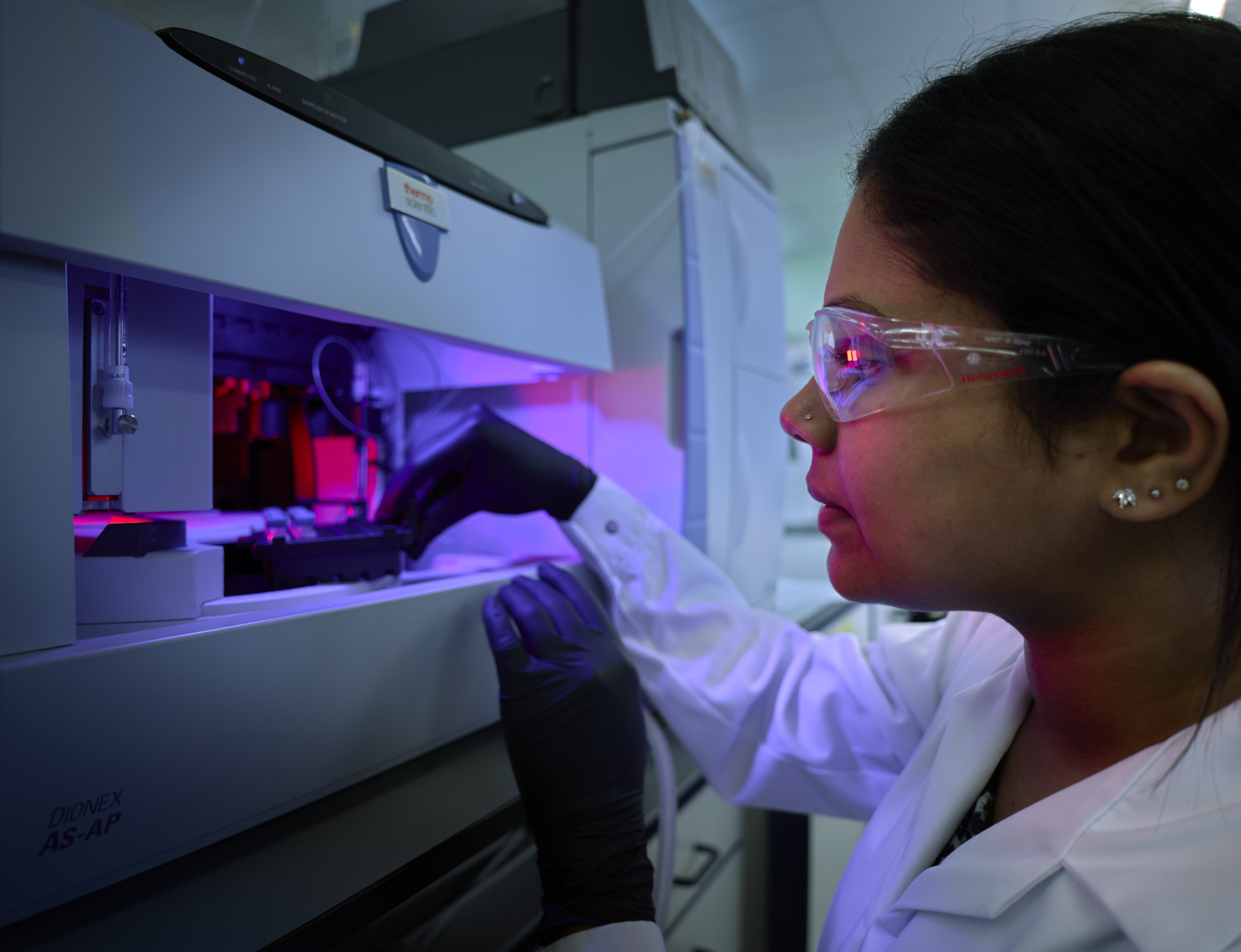Ion Chromatography is a technique widely used for organic and inorganic materials, particularly Counter ions such as Sodium and Potassium or Halides. It is beneficial for determining purity, monitoring reactions and production processes, and characterising complex materials.
The technique is also found in pharmacopoeia monographs to analyse Antibiotics and Sugars. Our Chromatography Laboratory has a wide range of detectors available to accommodate our clients’ needs, including:
- Conductivity Detection: Measures the electrical conductivity of ions in solution. Since most inorganic ions conduct electricity, this is the most commonly used detector in ion chromatography. It is used to quantify inorganic ions, such as sodium, potassium, halides, phosphate and sulfate, in pharmaceutical products to ensure compliance with pharmacopoeial monographs. It is also commonly used to monitor water quality in manufacturing processes.
- Pulsed Amperometric Detection (PAD): An electrochemical detection method that applies a sequence of potentials (pulses) to oxidise and clean the electrode surface, allowing the sensitive detection of electroactive species like carbohydrates. It is primarily used in formulations to detect sugars, sugar alcohols and increasingly for aminoglycoside antibiotics (such as Gentamicin, Kanamycin and Neomycin sulfates).
- Ultraviolet/Visible Light (UV/Vis) Detection: Detects analytes based on their absorbance of UV or visible light at specific wavelengths. Only analytes with chromophores (light-absorbing groups) can be detected. Typical pharmaceutical uses include detecting and quantifying organic acids, aromatic compounds, and certain drugs with UV-absorbing groups in formulations. There is also an application in USP<591> for Zinc.

Frequently Asked Questions
What is an Ion Chromatograph?
An Ion Chromatograph is an analytical instrument that separates, identifies, and quantifies ions (both anions and cations) in a solution. It is a type of liquid chromatography specifically designed for ionic species.
What is the difference between IC and HPLC?
Ion Chromatography (IC) separates ionic species based on their charge interactions with an ion-exchange resin (stationary phase). High-Performance Liquid Chromatography (HPLC) separates compounds based on polarity, size, or hydrophobicity, depending on the type of stationary phase (e.g., reverse-phase, normal-phase, size exclusion, etc.).
What are typical applications of IC in the Pharmaceutical industry?
- Determination of inorganic impurities (e.g., chloride, sulfate)
- Counterion analysis (e.g., sodium in sodium salts of APIs)
- Analysis of amino acids, carbohydrates and antibiotics
- Water quality testing in manufacturing
